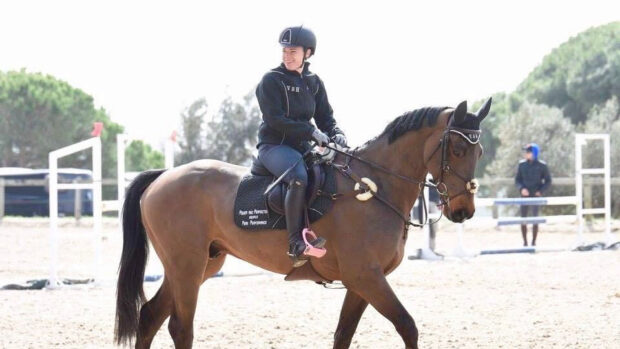NEW Zealand eventer Andrew Nicholson was spotted putting one hand on the top of Lord Killinghurst’s neck as he landed over the show jumps at Burghley this year. When questioned, Andrew at first claimed it was to stop him falling off, but H&H wanted to know more.
Why put your hand on top of your horse’s neck?
ANDREW explains that when he wants to turn left or right after a jump, he will put his outside hand on top of the horse’s neck as he lands. This helps to support the outside of the horse.
“When you are doing dressage, if you pull on the inside rein, the horse’s neck turns, but if you let go of the outside rein at the same time, they fall out through the outside shoulder,” he says.
“You have to keep supporting the outside to make the turn smoother and more correct, and putting a hand on top of the neck helps with this when jumping.”
Does it work with all horses?
THE Kiwi says he uses this technique with all his horses, and when he needs to turn between fences across country. But it’s particularly useful on his top horse, Lord Killinghurst.
“I show jump him in a mild hackamore, but he can be quite strong, so this gives me extra leverage to turn. If you wait until a stride after the fence he gets too much of a run on,” he explains.
Does anyone else do it?
SEVERAL show jumpers place their hand over their horses’ necks on landing, especially when turning quickly in jump-offs. Phillip Miller and Paul Barker were both spotted doing this on the way to second and third places in the Horse & Hound Foxhunter finals at this year’s Horse of the Year Show.
This Q&A was first published in Horse & Hound (15 November, ’07)



